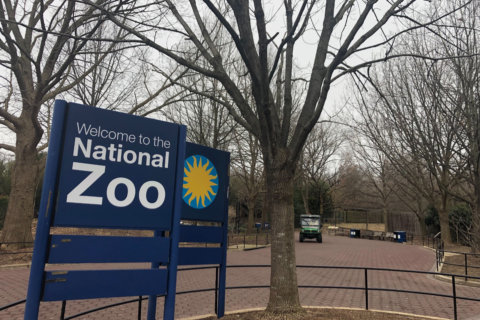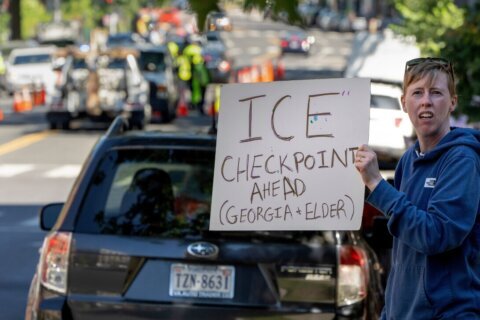The Smithsonian’s revamped proposal to decrease entry points to the National Zoo while bulking up perimeter fencing had been approved.
The proposal has two parts: To keep the zoo’s three vehicle and three primary pedestrian entry points (at Connecticut Avenue, the bus lot drop off and the lower zoo), and to consolidate the 10 informal entryways down to three, while maintaining direct access to parking lots A, B and C.
For the proposal’s second component, 4,205 feet of new fencing, will fill in gaps to the zoo’s perimeter. The fill-ins will be similar to the type already at the zoo.
The plan was approved by the National Capital Planning Commission on Thursday.
“The current proposal seeks to close this fencing gap, which will allow the zoo to better manage entry and exit from the zoo in the event of a security threat or an incident such as a lost visitor,” said John Gerbich, an urban planner with the National Capital Planning Commission who presented the Smithsonian’s proposed changes at Thursday’s meeting before the approval vote.
Eliminating these fencing gaps will also allow for better containment of the zoo’s animals in case of an escape from their enclosures. This will also protect them from wildlife around the zoo.
The redone proposal, which took local feedback into consideration, also addressed the possibility of year-round security screening.
“The Smithsonian has indicated that permanent screening pavilions are no longer part of the long- term plan for the zoo,” Gerbich said. “The zoo would continue its current practice of screening visitors only during periods of high visitation and/or high risk, which is typically during two weeks during the spring, and will continue to allow access through all six points of entry during these screening processes,” he said.
Concerns had been raised after a couple of incidents near the zoo involving visitors who had been on the grounds before violence broke out.
During comments after Gerbich’s presentation, National Zoo Director Steve Monfort reiterated that while permanent screening pavilions were “something that was proposed as a possibility,” it’s now completely taken that off the table.
“We have no plans to permanent entry pavilions of any sort. And also we have no plans to do permanent screening year-round. But we do reserve the right when law enforcement tells us we have credible threats, and we’ll take those into account and make adjustments. Otherwise, the screening will only occur as it’s been occurring for the last few years — during spring break for a couple of weeks,” Monfort said.
As for the reduction from 13 pedestrian entry points to six, “We think (it) is a reasonable balance between access and security and safety.”







